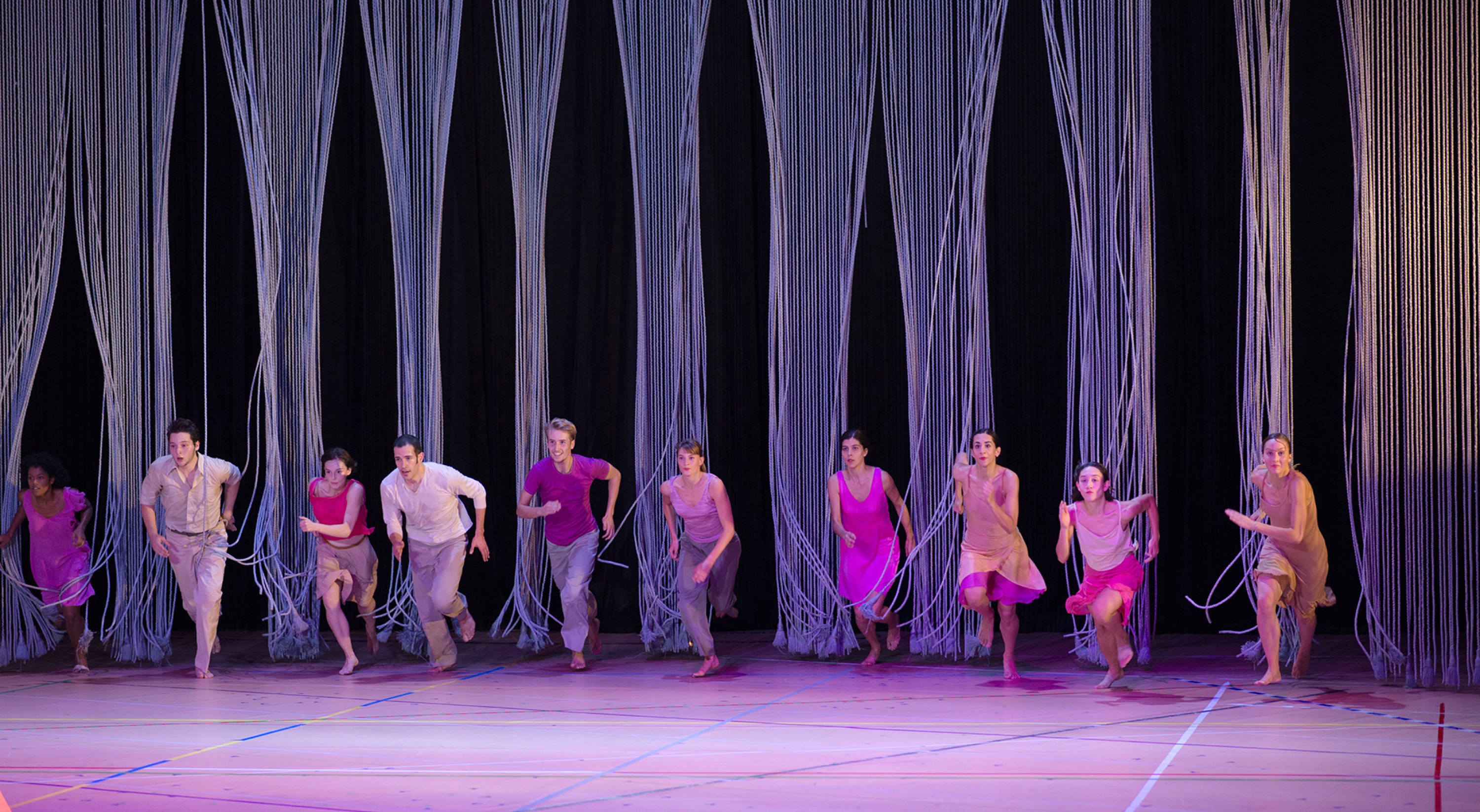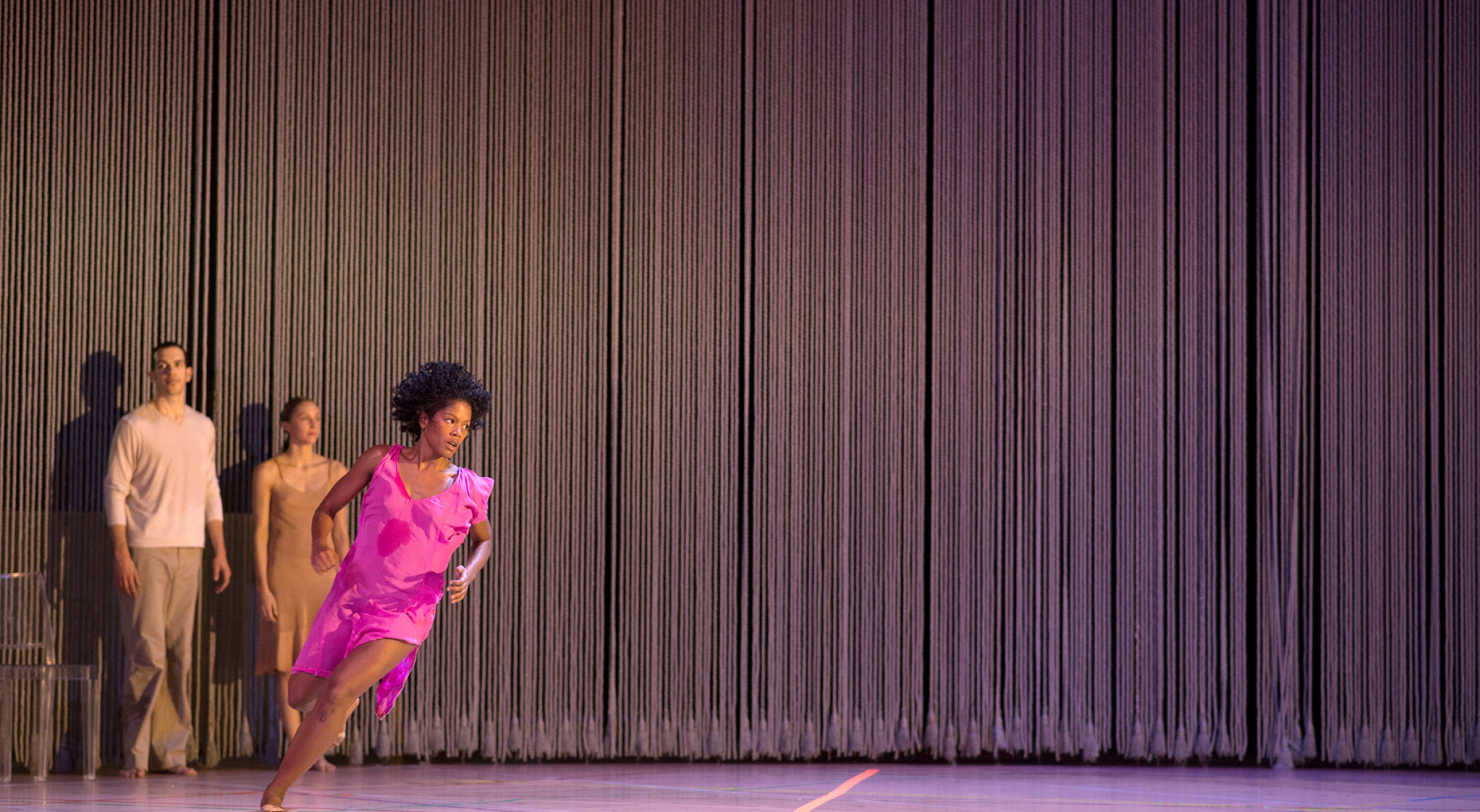Anne Teresa De Keersmaeker Ictus
Rain (live)
decemberdec 6 – 8
Choreography, Anne Teresa De Keersmaeker
Music, Steve Reich, Music for 18 Musicians
With Laura Bachman, Anika Edström Kawaji, Zoi Efstathiou, Yuika Hashimoto, Laura Maria Poletti, Soa Ratsifandrihana, Frank Gizycki, and Robin Haghi / Lav Crnčević, and Luka Švajda
Musical direction, Georges-Elie Octors
Musicians, Ensemble Ictus – Miquel Bernat, Tom De Cock, Géry Cambier, Michael Weilacher, Jessica Ryckewaert (percussion) ; Gerrit Nulens, Georges-Elie Octors (percussion and piano) ; Laurence Cornez, Jean-Luc Fafchamps, Stéphane Ginsburgh, Jean-Luc Plouvier (piano) ; Dirk Descheemaeker, Carlos Galvez (clarinet) ; Igor Semenoff (violin) ; Geert De Bièvre (cello) ; Synergy Vocals – Micaela Haslam, Amanda Morrison, Heather Cairncross, Caroline Jaya-Ratnam (voices)
Stage and lighting design, Jan Versweyveld
Costumes, Dries Van Noten
A Rosas production (2001) ; La Monnaie / De Munt (Bruxelles)
A coproduction (2016) with La Monnaie / De Munt (Brussels) ; Sadler’s Wells Theatre (London) ; and Les Théâtres de la Ville de Luxembourg
In association with La Villette (Paris) ; Théâtre de la Ville-Paris ; and Festival d’Automne à Paris
With support from Adami
First performed on 10 January 2001 at La Monnaie / De Munt (Brussels)
The Fondation d’entreprise Hermès is the patron for the Anne Teresa De Keersmaeker portrait
In partnership with France Inter
In Anne Teresa De Keersmaeker’s hands, what is Rain? Answer: an uninterrupted torrent of interwoven movements which repeat and answer each other, taking her minimalist geometry to new heights of harmony. Set to Music for 18 Musicians by Steve Reich, played live onstage by the Ictus ensemble, she has composed an edifice of pure dance which follows each and every contour of the musical loops.
Created in 2001, set to the music of Steve Reich, Rain is one of Anne Teresa De Keersmaeker’s most electrifying works. In many respects, Rain continues and amplifies the work initiated in Drumming three years earlier : the mathematised shapes, unceasing repetition, geometric occupation of the space, and art of permanent variation. In Rain, everything that had more or less become the choreographer’s trademark is pushed to the extreme. What we are presented with is a sort of mayhem of movement, which spreads, similar to a tide or fire, from one body to the next without ever stopping. Carried along by the irresistible, rhythmic waves of Steve Reich’s music, the ten dancers abandon themselves to an irrepressible, collective energy which interconnects them. We soon find ourselves being confronted with a unique community of beings, which never turns into a “mass”. Instead, what we have is a pulsating network of breathing, speeding bodies brought together by that strange form of friendship that only exhaustion breeds.
Running time: 1h10
In the same place



